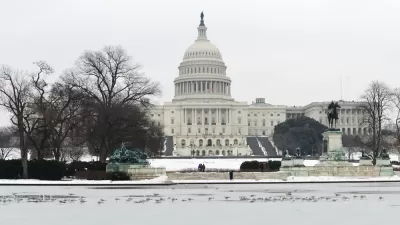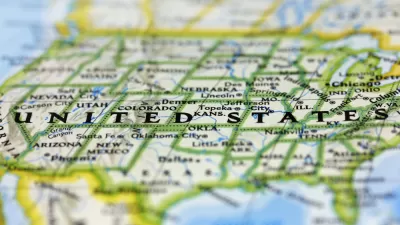Mapping congressional districts functions at a dynamic intersection of geography, politics, and community. Can technology, as with so many other issues at this intersection, improve the current system?
"Brian Olson is a software engineer in Massachusetts who wrote a program to draw 'optimally compact' equal-population congressional districts in each state, based on 2010 census data. Olson's algorithm draws districts that respect the boundaries of census blocks, which are the smallest geographic units used by the Census Bureau. This ensures that the district boundaries reflect actual neighborhoods."
The article shares a few examples of the difference between Olson's "optimally compact" districts and the gerrymandered reality of congressional districts.
An interesting question raised by speculating on a new system for districting, is the question of "communities of interest": "As Jonathan Bernstein wrote last year, a community of interest could be defined based on rural/urban divides, shared cultural background, economic interest, ethnic background, demographic similarity, political boundaries, geographic boundaries and on and on." In other words, "You can define a 'community of interest' pretty much however you want," which introduces the kind legalistic arguments that can enable, you know, gerrymandering.
FULL STORY: This computer programmer solved gerrymandering in his spare time

Planetizen Federal Action Tracker
A weekly monitor of how Trump’s orders and actions are impacting planners and planning in America.

Map: Where Senate Republicans Want to Sell Your Public Lands
For public land advocates, the Senate Republicans’ proposal to sell millions of acres of public land in the West is “the biggest fight of their careers.”

Restaurant Patios Were a Pandemic Win — Why Were They so Hard to Keep?
Social distancing requirements and changes in travel patterns prompted cities to pilot new uses for street and sidewalk space. Then it got complicated.

Platform Pilsner: Vancouver Transit Agency Releases... a Beer?
TransLink will receive a portion of every sale of the four-pack.

Toronto Weighs Cheaper Transit, Parking Hikes for Major Events
Special event rates would take effect during large festivals, sports games and concerts to ‘discourage driving, manage congestion and free up space for transit.”

Berlin to Consider Car-Free Zone Larger Than Manhattan
The area bound by the 22-mile Ringbahn would still allow 12 uses of a private automobile per year per person, and several other exemptions.
Urban Design for Planners 1: Software Tools
This six-course series explores essential urban design concepts using open source software and equips planners with the tools they need to participate fully in the urban design process.
Planning for Universal Design
Learn the tools for implementing Universal Design in planning regulations.
Heyer Gruel & Associates PA
JM Goldson LLC
Custer County Colorado
City of Camden Redevelopment Agency
City of Astoria
Transportation Research & Education Center (TREC) at Portland State University
Camden Redevelopment Agency
City of Claremont
Municipality of Princeton (NJ)





























